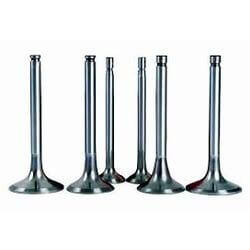© 2019 Suzhou Tianzhijiao Precision Machinery Co.,Ltd. All rights reserved. Site Map Designed by iwonder.cn
A regular user of a car or truck might just be seeing it as a mode of transport. The car enthusiast will see his vehicle as more than that. For him, the intricate functions and fixtures make as much sense as the car itself. They will keep a tab on the quality of engine valve and cylinders, or even the oil it consumes.
They will definitely be looking over the materials and the making of the parts to ensure that they last longer. They will check the material of an engine valve, as it is directly responsible for the lifespan of a valve and the overall engine functions.
How is the engine valve material a serious matter?
A car enthusiast who also works on customizing cars will be aware of the types of engine valves. There are overhead valves and exhaust valves and though the functions might vary, their purpose is always the basic ones.
Engine valves come in a host of materials or metals, including alloy to ensure durability like no other.

Martensitic steel is where the steel goes through a process of heating and cooling very quickly. This makes the steel to become hard and brittle. This also makes the valves durable, strong, and tensile as per the required limit. However, while treating steel in this way, the temperature and pressure during the process make a big difference.
Engine valves made of steel with the popular and trusted 8,440 alloy ensures the exact material quality. It is ideal for the hot engines that every car will have and the need is there for the outlet valves from the exhaust to be let out easily irrespective of the heat. There are even carbon steel and Chromium alloy, which go great in this case to withstand heat.
Austenitic stainless steel is a recommended metal to manage high temperature. However, there are people who try to mix it with the martensitic steel. However, it is just not that great in comparison to the regular alloys available in the market.
Besides the metals that one chooses, other components like sprockets, cam, push rod, and tappet should be equally great. These should have the dimensions and gaps’ precision right to function well. A slight negligence might ruin the prospect of a functioning engine irrespective of the material of engine valves.
By continuing to use the site you agree to our privacy policy Terms and Conditions.